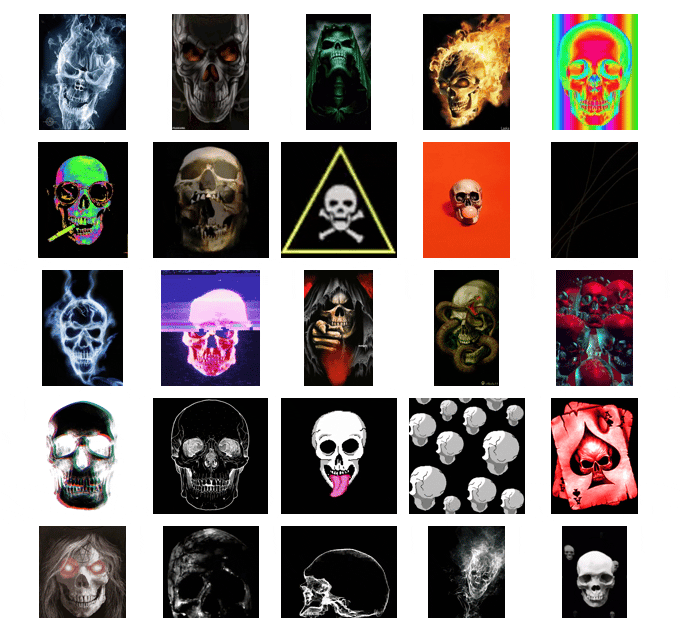팝업레이어 알림
팝업레이어 알림이 없습니다.해골 비디오 스티커
많은 문화에서 해골과 해골은 죽음, 죽음, 생명의 무상함을 나타내는 상징으로 사용되어 왔다. 해골과 해골을 죽음과 죽음의 상징으로 사용한 것은 고대 문화로 거슬러 올라갈 수 있는데, 그곳에서 그것들은 종교 의식과 죽은 사람을 기념하는 의식의 일부로 사용되었다.
문학과 예술에서 해골과 해골은 종종 죽음, 부패, 노화와 죽음의 필연성의 상징으로 사용되어 왔다. 어떤 경우에는 해골과 해골이 생명의 연약함과 삶의 중요성을 최대한 강조하는 상징으로 사용되기도 한다.
해골의 맥락에서, 그것의 상징적 의미는 그것이 사용되는 특정한 맥락에 따라 달라질 수 있다. 그것은 죽음, 사망, 또는 생명의 무상함을 상기시키는 것일 수 있다. 그러나 더 많은 정보가 없이는 특정한 예술 작품이나 문학 작품에서 '해골'의 구체적인 상징적 의미를 결정하기 어렵다.
In many cultures, skeletons and skulls have been used as symbols to represent death, mortality, and the impermanence of life. The use of skeletons and skulls as symbols of death and mortality can be traced back to ancient cultures, where they were used in religious ceremonies and as part of rituals to commemorate the dead.
In literature and art, skeletons and skulls have often been used as symbols of death, decay, and the inevitability of aging and death. In some cases, skeletons and skulls are also used to symbolize a reminder of the fragility of life and the importance of living life to the fullest.
In the context of the "Haegol" (Skull), its symbolic meaning could depend on the specific context in which it is being used. It could represent death, mortality, or a reminder of the impermanence of life. However, without more information, it is difficult to determine the specific symbolic meaning of the "Haegol" in a particular work of art or literature.
해골 비디오 스티커
텔레그램 스티커팩
Skulls
Telegram sticker set
- 텔레그램 메신저
- 텔레그램 다운로드
- 텔레그램 설치
- 텔레그램 사용법
- 텔레그램 대화방
- 텔레그램 대화방 검색
- 텔레그램 대화방 초대
- 텔레그램 대화방 삭제
- 텔레그램 그룹
- 텔레그램 가입
- 텔레그램 탈퇴
- 텔레그램 삭제
- 텔레그램 계정삭제
- 텔레그램 전화번호
- 텔레그램 연락처
- 텔레그램 pc
- 텔레그램 pc버전
- 텔레그램 한글
- 텔레그램 한국어
- 텔레그램 채널
- 텔레그램 채널 검색
- 텔레그램 스티커
- 텔레그램 스티커 검색
- xpffprmfoa



